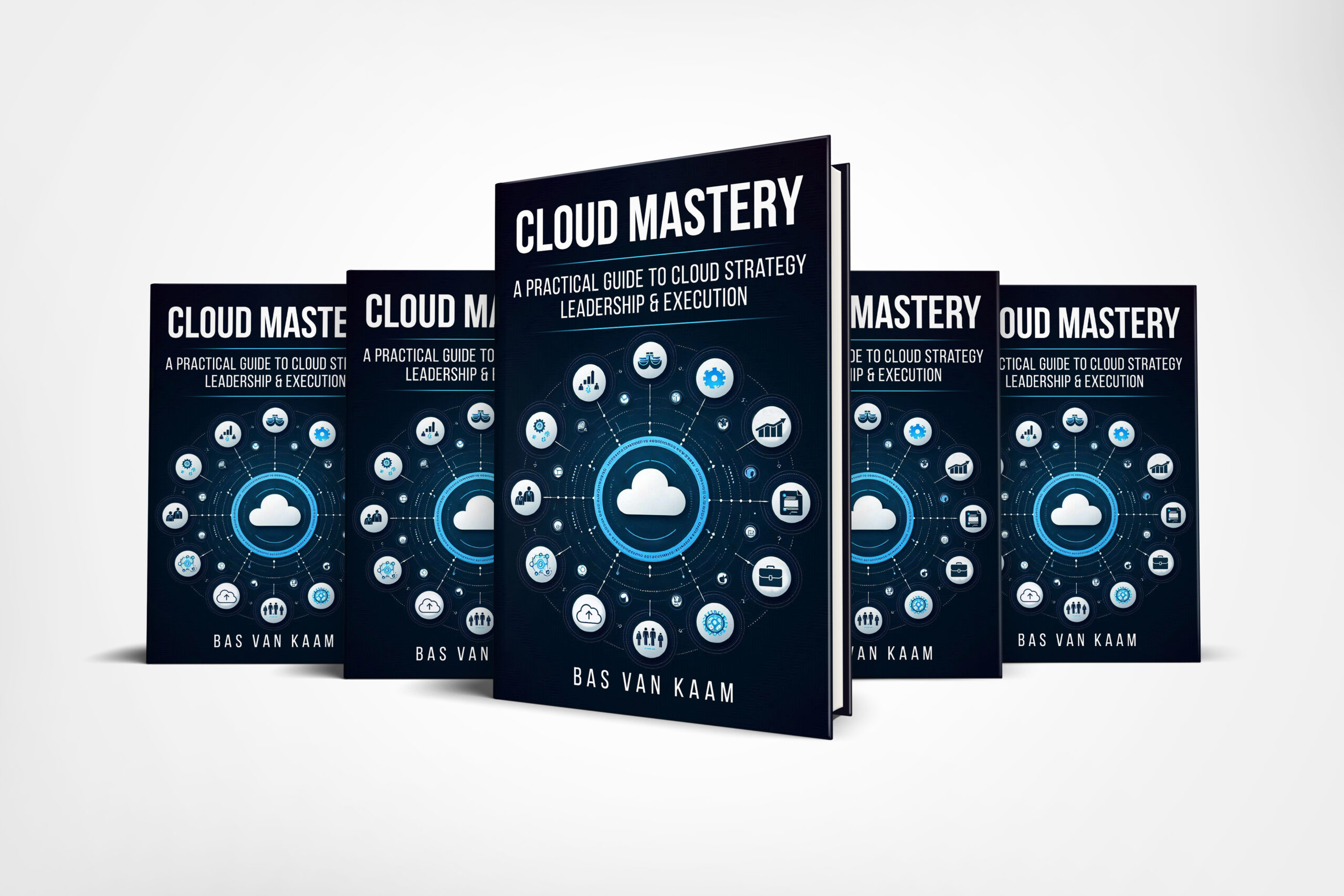Chapter 1: Once Upon a Time… The Evolution and History of Cloud Computing
Description: This chapter begins with the origins of cloud computing and traces the development of networks from ARPANET to today’s cloud environments. It explains how technologies like virtualization and the World Wide Web contributed to the rise of cloud computing. The launch of AWS in 2006 marks the beginning of commercial cloud solutions. The chapter highlights key milestones in cloud history, including the emergence of SaaS, hybrid models, and the standardization of serverless computing.
Chapter 2: Cloud Principles, Key Delivery and Deployment Models
Description: The core principles of cloud computing, including scalability, flexibility, and resource sharing. It explores delivery models such as Software-as-a-Service, Platform-as-a-Service, and Infrastructure-as-a-Service, as well as deployment models like public, private, hybrid, and multi-cloud. This chapter also addresses common misconceptions, planning challenges, and the impact of vague definitions of “the cloud.”
Chapter 3: The Big Three
Description: A current look at the cloud market in 2025, focusing on the top players: AWS, Microsoft Azure, and Google Cloud Platform. Their services, strengths, and differences are compared side by side.
Chapter 4: The New Business Reality
Description: This chapter examines the impact of cloud computing on business and organizational culture. Topics include digital transformation, shadow IT, and the evolving role of IT. It also explores the disconnect between IT and the business side, and the emergence of IT as an internal service broker. The chapter offers practical guidance for IT teams to position themselves as strategic partners within their organizations.
Chapter 5: Strategy – Step-Cloud Adoption Framework
Description: This chapter introduces the first pillar of the Step-Cloud Adoption Framework (SCAF): strategy. It explains how organizations make strategic decisions around cloud adoption, including stakeholder management, SWOT analysis, and the importance of establishing a Cloud Center of Excellence (CCoE). Tools and frameworks are provided to help organizations develop a solid cloud strategy.
Chapter 6: The Cloud Economy
Description: A focus on financial aspects such as CAPEX versus OPEX, cost savings, and return on investment (ROI). The chapter discusses how organizations manage cloud costs and gain insight into total cost of ownership (TCO). It also dives deep into the business case for DaaS (Desktop as a Service) compared to traditional infrastructures like VDI (Virtual Desktop Infrastructure).
Chapter 7: Cloud Architectures and Services
Description: A technical chapter that explores cloud architectures such as hybrid and multi-cloud, and services like serverless computing and Infrastructure as Code (IaC). Topics include storage options, disaster recovery, and data import/export capabilities. Concepts like Function-as-a-Service (FaaS) and enterprise architecture are also addressed.
Chapter 8: Insight – Step-Cloud Adoption Framework
Description: This chapter covers the second pillar of the SCAF: insight. It explains how companies inventory and evaluate applications, data, and systems. Topics such as the 6 R’s (Retire, Retain, Rehost, Replatform, Refactor, Replace) are explained. Governance is discussed in detail, along with how to establish a structured Go/No-Go decision-making process.
Chapter 9: Data and Governance
Description: This chapter provides a deep dive into data management and governance in the cloud. Topics include GDPR compliance, data processing, and regulatory requirements. The role of the Cloud Center of Excellence (CCoE) in governance processes is emphasized, along with how security fits into the broader data management landscape.
Chapter 10: Security
Description: Security takes center stage in this chapter, with a detailed look at topics such as Zero Trust, risk assessments, and the importance of a Security Operations Center (SOC). Trends in cybersecurity are explored, along with actionable steps organizations can take to protect themselves against modern threats.
Chapter 11: Execution – Step-Cloud Adoption Framework
Description: Here, the third pillar of the SCAF is introduced: execution. The chapter focuses on migration and implementation planning, both from a technical and functional perspective. Project management and maintaining governance during execution are discussed, along with practical guidance for team management and skill readiness.
Chapter 12: Cloud Exit Strategy
Description: This chapter explains how to create an exit strategy, including how to deal with flexibility, vendor lock-in, and service level agreements (SLAs). It offers practical guidance for companies looking to transition out of the cloud or potentially reconfigure their current setup.
Chapter 13: Community
Description: This chapter highlights the importance of community in IT, with examples of both local and global networks. It covers collaboration, knowledge sharing, and the benefits of professional communities. Initiatives such as VDI Like a Pro are also discussed.
Chapter 14: Adoption – Step-Cloud Adoption Framework
Description: The final stage of the SCAF: adoption. This chapter covers key performance indicators (KPIs), lessons learned, and cost control. It provides tools for knowledge transfer and for establishing an effective cloud adoption process across different parts of the organization.
Chapter 15: The Future and Emerging Trends
Description: A look at emerging technologies and trends such as AI, machine learning, and edge computing. Concepts like the Hype Cycle and Gartner Magic Quadrants are explored. The chapter also discusses the role of the Field CTO in guiding organizations through technological change.
Chapter 16: The Evolution of Digital Nomads
Description: This chapter explores the rise of digital nomads and how the cloud enables flexible workspaces. It highlights the benefits of remote work and the emergence of so-called “Nomad Hubs.”
Chapter 17: Cloud Only? No. Cloud First or Hybrid? Yes.
Description: A concluding paper originally written as a final assignment for a Cloud Masterclass course about five years ago. It makes the case for hybrid cloud models and discusses how companies can strike the right balance between on-premises and cloud solutions. The human factor—such as resistance to change—is also taken into account.

